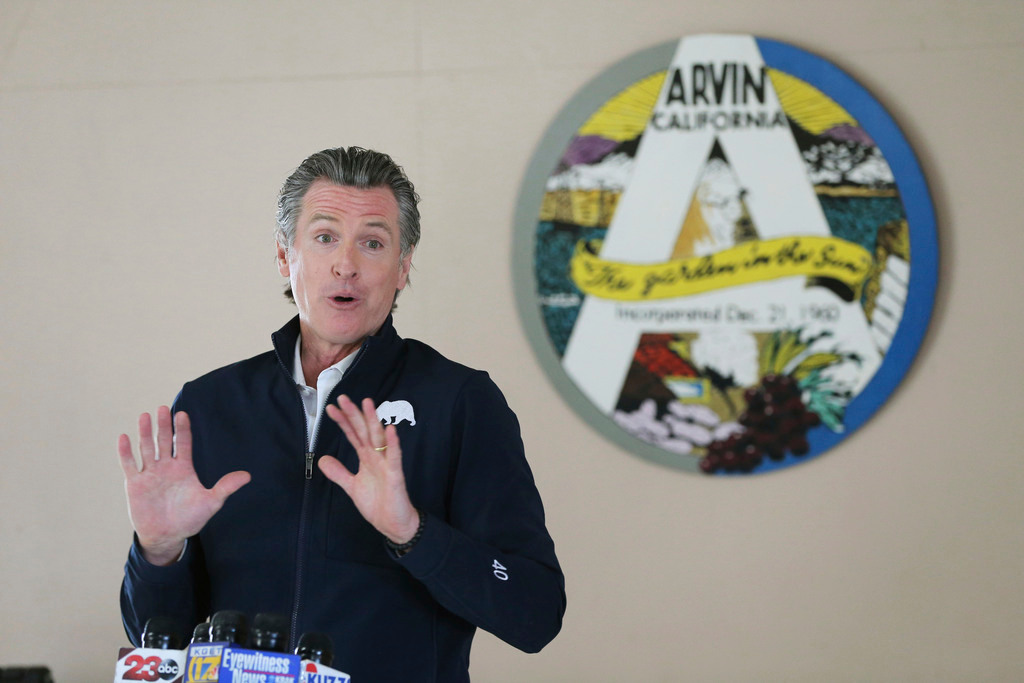By Adam Beam | The Associated Press
California lawmakers on Thursday approved the first state-funded guaranteed income plan in the U.S., $35 million for monthly cash payments to qualifying pregnant people and young adults who recently left foster care with no restrictions on how they spend it.
The votes — 36-0 in the Senate and 64-0 in the Assembly — showed bipartisan support for an idea that is gaining momentum across the country. Dozens of local programs have sprung up in recent years, including some that have been privately funded, making it easier for elected officials to sell the public on the idea.
California’s plan is taxpayer-funded and could spur other states to follow its lead.
“If you look at the stats for our foster youth, they are devastating,” Senate Republican Leader Scott Wilk said. “We should be doing all we can to lift these young people up.”
Local governments and organizations will apply for the money and run their programs. The state Department of Social Services will decide who gets funding. California lawmakers left it up to local officials to determine the size of the monthly payments, which generally range from $500 to $1,000 in existing programs around the country.
The vote came on the same day millions of parents began receiving their first monthly payments under a temporary expansion of the federal child tax credit many view as a form of guaranteed income.
“Now there is momentum, things are moving quickly,” said Michael Tubbs, an advisor to Gov. Gavin Newsom, who was a trailblazer when he instituted a guaranteed income program as mayor of Stockton. “The next stop is the federal government.”
For decades, most government assistance programs have had strict rules about how the money could be spent, usually limiting benefits to things like food or housing. But a guaranteed income program gives money to people with no rules on how to spend it. The idea is to reduce the stresses of poverty that cause health problems and make it harder for people to find and keep work.
“It changes the philosophy from ‘big brother government knows what’s best for you,’” said state Sen. Dave Cortese, a Democrat from San Jose. “We’ve been very prescriptive with that population as a state and as counties go. Look at the failure. Half of them don’t get their high school diplomas, let alone advance like other people their age.”
But critics like Republican Assemblyman Vince Fong of Bakersfield say guaranteed income programs “undermine incentives to work and increase dependence on government.”
“We should be pushing policies that encourage the value of work,” said Fong, who abstained from Thursday’s vote. “Guaranteed income doesn’t provide the job training and skills needed for upward mobility.”
Guaranteed income programs date back to the 18th century. The U.S. government even experimented with them in the 1960s and 1970s during the Nixon administration before they fell out of favor.
But recently, guaranteed income programs have been making a comeback. Programs have been announced in New Orleans; Oakland, Tacoma, Washington; Gainesville, Florida; and Los Angeles — the nation’s second largest city, which has a plan to give $1,000 a month to 2,000 needy families.
The state wants to target the money on programs that benefit pregnant people and young adults aged out of the foster care system to help them transition to life on their own.
Santa Clara County’s program has cost the county $1.4 million so far. Participants get the money on a debit card, which they can use for purchases or to withdraw money from an ATM. County officials ask them to fill out surveys to monitor how they are doing, but they haven’t completed a thorough analysis, said Melanie Jimenez Perez, who oversees the program.
An analysis of a guaranteed program in Stockton found full-time employment increased among participants after the first year of receiving the money.











